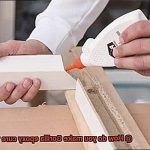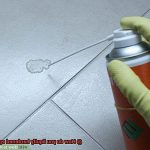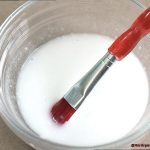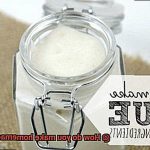Have you ever been left frustrated by a weak and brittle epoxy bond that just won’t hold up? Don’t worry, you’re not alone. While epoxy glue is an incredibly versatile adhesive that can bond a wide range of materials, it can still fail under certain circumstances. But fear not, because with a few simple techniques, you can make your epoxy bond stronger and more reliable than ever before.
It’s important to understand the factors that can weaken an epoxy bond. Moisture, temperature changes, and improper mixing ratios are all culprits that can contribute to a weaker bond. Luckily, these issues have easy solutions.
One way to make your epoxy glue bond stronger is to use a high-strength formula. These specialized blends contain additives that enhance the bonding properties of the epoxy, resulting in a more robust bond. Additionally, reinforcing your epoxy joint with fiberglass or carbon fiber can significantly increase its strength and resilience.
Another effective technique is to rough up the surfaces to be bonded before applying the epoxy. Sanding or using a wire brush creates a rough texture that allows the epoxy to penetrate deeper into the material for a more secure bond.
Whether you’re working on a DIY project or professional construction job, knowing how to make your epoxy bond stronger is crucial for achieving optimal results. So next time you find yourself struggling with a weak epoxy bond, try out some of these techniques and watch as your bond becomes stronger than ever before.
What is Epoxy Glue?
Contents
Epoxy glue, a two-part adhesive composed of resin and hardener, is a powerful bonding agent with a myriad of applications. Its chemical reaction creates a strong and durable bond, making it an ideal choice for heavy-duty tasks. This adhesive boasts several advantages that make it a reliable option for various industries.
One of the most significant benefits of epoxy glue is its immense strength, with high shear resistance that can withstand stress and strain. This strength makes it useful in construction and automotive repair, where durability is critical.
Epoxy glue’s resistance to water, chemicals, and heat adds to its versatility. It can maintain its strength and durability even when exposed to harsh environments or extreme temperatures. This quality makes it a popular choice in industries such as marine and aerospace.
However, there are tips and techniques that can be applied to make epoxy glue even stronger. Firstly, using a high-quality epoxy designed for the material being bonded is essential. Secondly, the surfaces being bonded must be clean, dry, and free from any contaminants such as oil or dust. Roughening the surface may also be necessary to improve adhesion.
Curing time plays a crucial role in making epoxy glue stronger. Following the manufacturer’s instructions for curing time and temperature is vital for maximum strength development. Applying pressure to the bonded surfaces during curing using clamps or weights can also improve the bond’s strength and durability.
Adding fillers or additives like fiberglass, metal particles, or wood flour to the epoxy mixture can enhance its structural integrity by providing reinforcement.
Choosing a High-Quality Epoxy
If you want to ensure that your epoxy glue bond is as strong and durable as possible, choosing a high-quality epoxy is crucial. With so many options on the market, it can be overwhelming to decide which one to choose. Here are some essential factors to consider when selecting an epoxy that will help you achieve maximum strength and durability.
Thickness Matters
The thickness or viscosity of the epoxy plays a significant role in its strength and durability. A thicker epoxy is generally stronger and more durable than a thinner one, but it may also be more challenging to work with and require longer curing times. Therefore, for a strong bond, go for a thicker epoxy.
Choose the Right Type
Different types of epoxies have unique properties, strengths and weaknesses. Some epoxies are designed for use in high-stress applications, while others are better suited for wet environments. Hence, it’s crucial to choose an epoxy that matches your specific application requirements.
Material Compatibility is Key
It’s vital to consider the compatibility of the epoxy with the materials you intend to bond. Some epoxies may work well on certain materials but not on others, so it’s wise to check the manufacturer’s recommendations before making your selection. You don’t want to invest in an epoxy that isn’t compatible with your materials.
Cure Time Affects Strength
The cure time refers to how long it takes for the epoxy to harden completely. Longer curing times typically mean stronger bonds, but they may also take longer to complete your project. Therefore, consider the curing time when selecting an epoxy that meets your needs.
Temperature Resistance Matters
Temperature resistance is critical when selecting an epoxy. If you’re working in an environment that experiences extreme temperatures, such as hot or cold weather conditions, you’ll need an epoxy that can withstand those temperatures without breaking down or losing its bonding strength.
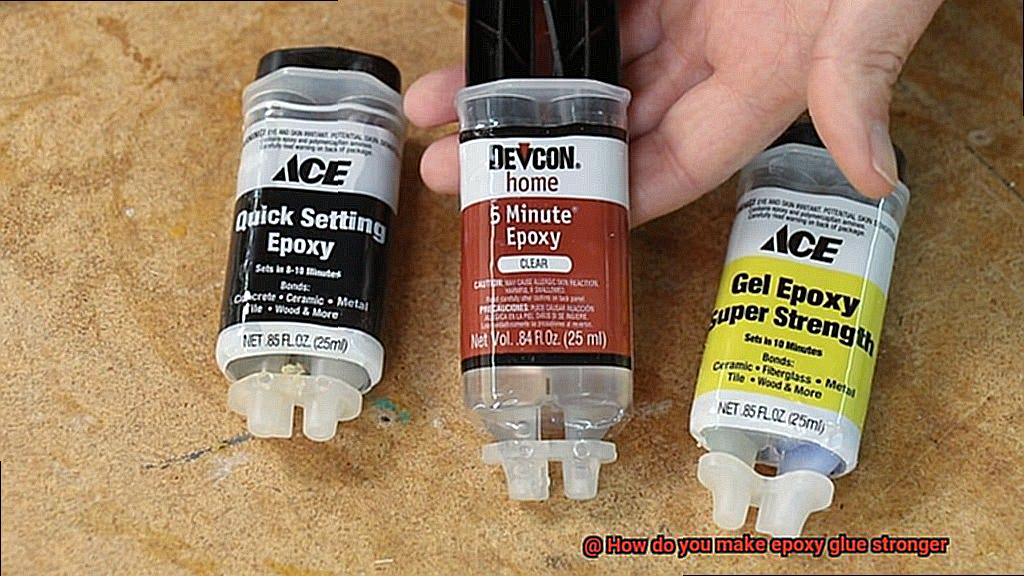
Flexibility is Important
Consider how flexible the cured epoxy will be. If you need an epoxy that can withstand high levels of stress or strain, you’ll need a more flexible formula that can bend and flex without breaking.
Surface Preparation
Surface preparation is a critical step in achieving a strong and durable bond with epoxy glue. As an expert in this field, I can confidently say that proper surface preparation is key to ensuring that your epoxy glue is effective and long-lasting. Let’s explore the essential steps required for optimal surface preparation.
Firstly, cleanliness is paramount. Any dirt, oil, or debris on the surface can weaken the bond of the epoxy glue. Therefore, it’s crucial to clean the surface thoroughly with a solvent like acetone or alcohol. This will eliminate any contaminants and ensure that the surface is ready for application.
Another factor to consider is the roughness of the surface. A rougher surface provides more area for the epoxy glue to adhere to, resulting in a stronger bond. You can achieve a rougher surface by using sandpaper or a wire brush to create small scratches or grooves on the surface. This will give your epoxy glue a better grip and make it more durable.
Moistening the surface with water before applying epoxy glue is also an important step. The moisture helps to activate the curing process of the epoxy, resulting in a better bond. However, be cautious not to use too much water as this can cause air bubbles and weaken the bond.
Finally, make sure that the surface is completely dry before applying epoxy glue. Any moisture left on the surface can cause air bubbles and weaken the bond. Take your time and allow enough time for the surface to dry completely before proceeding with your application.
Curing Time
When it comes to epoxy glue, two components – a resin and a hardener – are mixed together before application. This mixture then undergoes a chemical reaction that causes it to harden and cure over time.
Curing time is an essential factor in making epoxy glue stronger. Rushing the process or not allowing enough time for curing can result in weaker bonds that are more prone to breaking or separating. Similarly, allowing too much time for curing can also weaken the bond, as the surface may become too hard and unable to form a proper bond with the other material.
To ensure that the curing process is completed correctly and a strong bond is created, it is crucial to follow the manufacturer’s instructions carefully. This includes using the correct amount of each component, mixing them thoroughly, and allowing sufficient time for curing. Temperature and humidity can also impact curing time, so it’s important to consider these factors when using epoxy glue.
To speed up the curing process in some cases, specialized curing agents or increasing temperature may be used. However, it’s essential not to rush the process or compromise the strength of the bond.
Adding Fillers or Additives to the Mixture
If you’re tired of weak and unreliable glue bonds, adding fillers or additives to your epoxy glue mixture can be the ultimate solution. As an expert on this topic, let me take you through the various types of materials that can be added to the mixture to improve its strength, durability, and overall performance.
Microspheres are small hollow beads that can reduce the weight of the glue while increasing its strength and durability. They also improve sanding and finishing properties, making it easier to achieve a smooth and polished surface. On the other hand, fibers are used to increase the strength and toughness of the epoxy glue. They also improve impact resistance, preventing cracking or breaking of the glued surface.
Thickeners are another type of additive that can be added to the epoxy glue mixture. Thickeners increase the viscosity of the glue, making it easier to apply and control. They also improve gap-filling properties, which is especially useful when working with uneven or irregular surfaces.
However, it’s essential to follow the manufacturer’s instructions carefully when adding fillers or additives to your epoxy glue mixture. Adding too much filler or additive can negatively affect the curing time and weaken the strength of the glue. Therefore, ensure that you mix it thoroughly with the epoxy resin before adding the hardener.
Applying Pressure to Bonded Surfaces
Well, it’s not as simple as just pushing two surfaces together and hoping for the best. Here’s what you need to know:
Firstly, you need to decide on the best method of pressure application for your project. Clamps are perfect for smaller surfaces, while weights are better suited for larger areas. Both methods work by pressing the two surfaces together and holding them in place until the epoxy has fully cured. Using either of these methods will ensure maximum contact between the two surfaces, allowing the epoxy glue to bond more effectively.
It’s important to keep in mind that the amount of pressure applied will depend on the type of epoxy being used and the materials being bonded. To ensure there are no gaps or air pockets between the surfaces, follow the manufacturer guidelines on recommended pressure application.
Moreover, ensuring that the pressure is applied evenly across the entire surface area is also crucial. Uneven pressure can lead to weak spots in the bond, affecting its strength.
But what if you’re working with a complex shape or surface? In this case, a vacuum bag might be your best bet. This technique involves placing the two surfaces in a vacuum-sealed bag and using a vacuum pump to remove all air from within the bag. The resulting atmospheric pressure compresses the two surfaces together, creating a strong bond.
Tips and Tricks for Making Epoxy Glue Stronger
Epoxy glue is a versatile adhesive that can be used for various projects. However, the strength of the bond depends on how well you prepare the surfaces, mix the components, and apply the glue. Here are some tips and tricks to make your epoxy glue stronger:
Surface Preparation
Proper surface preparation is crucial for a strong bond. Before applying the epoxy glue, make sure the surfaces you are bonding are clean, dry, and free of any contaminants such as oil or grease. You can use a solvent like acetone to clean the surfaces thoroughly. This will help ensure that the epoxy glue adheres properly to the surfaces.
Fillers
Adding fillers to the epoxy mixture can make it stronger. Common fillers include wood flour, silica, and micro balloons. These fillers help reinforce the bond between materials and make it more resistant to stress and impact. Mix the filler material with the epoxy glue before applying it to the surfaces you are bonding.
Heat
Applying heat to the epoxy glue after it has been applied can help accelerate the curing process and improve the strength of the bond. However, it’s important not to overheat the glue, as this can cause it to become brittle and weak. Use a heat gun or hairdryer on low heat to apply gentle warmth to the surface.
Clamping
Clamping is essential for achieving a strong bond between materials. After applying the epoxy glue, clamp or apply pressure on the materials together until they cure completely. This helps to ensure a tight bond and eliminate any air bubbles that may weaken the bond strength.
Also Read: How to Make Glue Dry Faster
Conclusion
In conclusion, epoxy glue is a versatile adhesive that can bond an array of materials. However, even with its exceptional strength and durability, it can still fail under certain conditions. But fret not, there are simple techniques to make your epoxy bond stronger and more reliable than ever before.
Factors such as moisture, temperature changes, and improper mixing ratios can weaken the bond. To create a stronger bond, opt for a high-strength formula or reinforce the joint with fiberglass or carbon fiber. Roughing up the surfaces before applying the epoxy creates a rough texture that allows for deeper penetration into the material for a secure hold.
Choosing a high-quality epoxy designed for the material being bonded is crucial for optimal results. Surface preparation combined with sufficient curing time helps in creating a durable bond that withstands the test of time. Adding fillers or additives like microspheres, fibers, and thickeners to the mixture enhances its structural integrity by providing reinforcement.
To improve the bond’s strength and durability, apply pressure evenly across the entire surface area using clamps or weights during curing. By following these tips and tricks, you’ll be able to make your epoxy glue bond stronger and achieve optimum results in your DIY projects or professional construction jobs.


